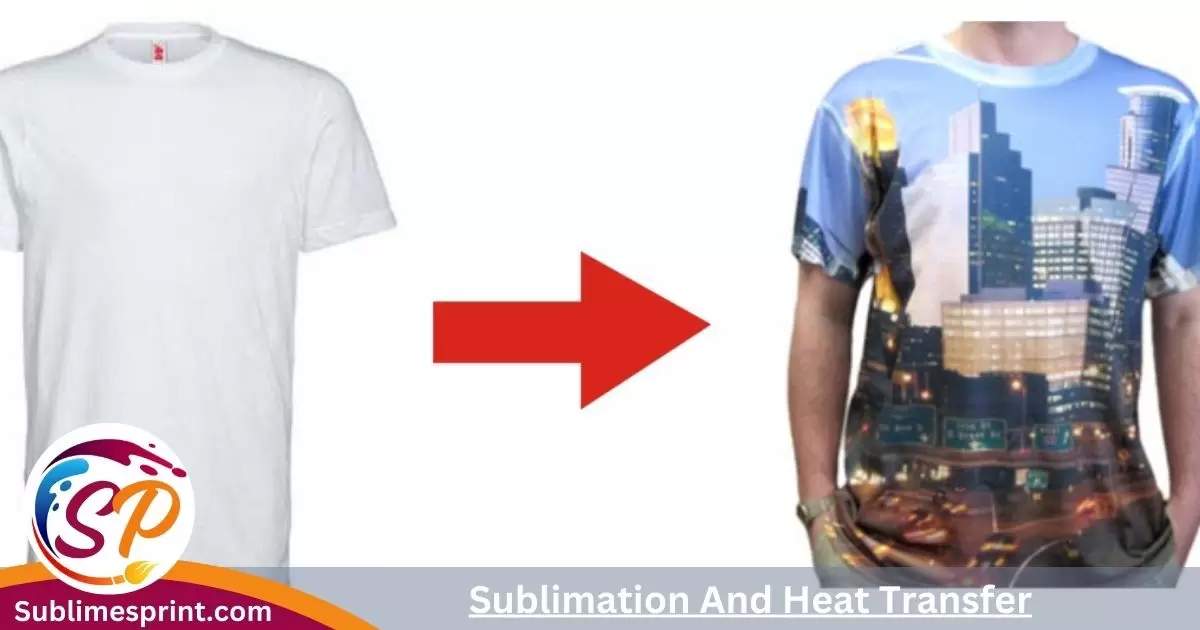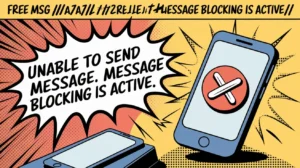Hello there, budding designers and creative minds! Today, we’re on an exciting adventure into the fascinating world of printing, where two techniques, Sublimation Printing and Heat Transfer, take center stage. Difference between sublimation and heat transfer Don’t worry if these terms sound a bit technical; we’re here to break them down in the simplest way possible.
Let’s start with the basics. Printing, in the realm of design, is like bringing your imagination to life on paper, fabric, or various surfaces. From the classic methods your grandparents used to the fancy tech-savvy tools we have today, there’s a plethora of ways to make your creations tangible.
Now, you might be wondering, “Why should I care about these techniques?” Well, think of them as your secret weapons in the design arsenal. Each has its superpowers—sublimation printing is like a coloring wizard for fabrics, while heat transfer is your go-to for customizing clothes, accessories, and all sorts of fun DIY projects.
In the next few minutes, we’ll unravel the mysteries behind sublimation and heat transfer. Picture it as a friendly face-off, each technique showcasing its strengths. Sublimation brings colors to life in textiles and promotional goodies, while heat transfer is the quick-change artist, adapting to everything from T-shirts to your favorite DIY crafts.
Understanding Sublimation Printing
What’s Sublimation Printing?
Alright, let’s talk about sublimation printing in a way that even your kid brother could get. Picture this: you have a magical coloring book, and instead of using regular crayons, you have special ones that turn into vibrant, everlasting colors when you wave a wand over them. That’s sublimation printing—it’s like magic for your designs.
How Does Sublimation Magic Work?
Now, let’s peek behind the curtain of this magical show. Sublimation uses heat to turn solid dye into a gas, and then it sneaks that colorful gas right into the fibers of your fabric or material. It’s like giving your design a big, warm hug, ensuring it stays put and looks awesome.
Where Does Sublimation Shine?
Imagine having a superhero power—sublimation’s power is making fabrics come to life! It’s the go-to choice for printing on clothes, creating promotional goodies, and even making your home decor items pop with colors.
Is Sublimation the Ultimate Hero?
Hold on, every hero has its strengths and weaknesses. Sublimation might be fantastic for fabrics, but it might not be the best fit for every project. We’ll uncover the pros and cons later, so stay tuned.
Delving into Heat Transfer Printing
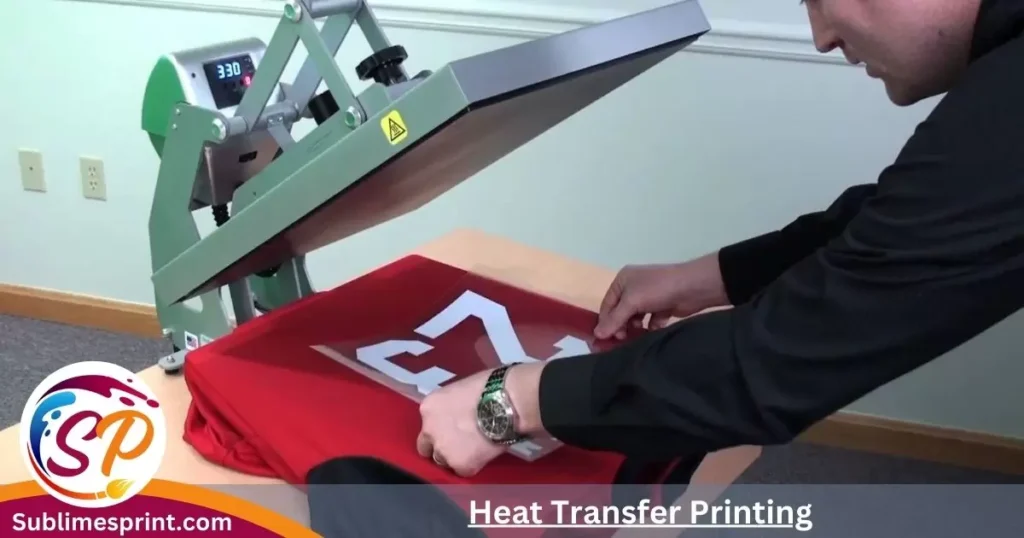
Let’s Talk Heat Transfer: What’s the Buzz?
Alright, little creators, let’s switch gears and chat about something equally cool—Heat Transfer. Imagine you have a bunch of stickers that you can stick on anything you like. Heat transfer is like the superhero of stickers, but for your designs!
The Heat Transfer Superpower Unveiled
Here’s the trick: with heat transfer, you have this special paper with your design on it. When you apply a bit of heat—like a magic touch—it makes your design jump from the paper to whatever you want to customize. It’s like your designs become magical stickers you can put on T-shirts, bags, or even on your favorite DIY projects.
Where Does Heat Transfer Work Its Magic?
Now, where does this magical sticker power shine the brightest? Heat transfer is your go-to for making your clothes stand out. Want a customized T-shirt with your favorite design? Heat transfer’s got your back. And guess what? It’s not just for clothes; you can use it on accessories and unleash your creativity in fun DIY projects.
Is Heat Transfer the Real Hero?
Hold your excitement, little artists. While heat transfer is fantastic for certain things, it might not be the perfect match for every situation. We’ll talk about the good and not-so-good parts soon, so stay with me.
The Clash: Differences Between Sublimation Printing and Heat Transfer
Print Quality Showdown: Sublimation vs. Heat Transfer
Alright, young designers, imagine you have two superheroes—one that paints with precision, and the other that places stickers with flair. That’s the essence of Sublimation Printing and Heat Transfer. Let’s see how their powers stack up.
- Sublimation Printing: Think of it as a painting master. It creates designs with detailed precision and vibrant colors. Since it becomes one with the material, the result is smooth, fade-resistant, and eye-catching.
- Heat Transfer: Now, envision your favorite stickers coming to life. Heat transfer brings designs to the surface with a bit more texture. It’s like a stylish sticker that stands out, giving a different vibe to your creations.
Durability and Longevity Factors
Our superheroes have strengths, but they also have limits. Let’s talk about how long their creations last.
- Sublimation Printing: Once the design becomes part of the material, it’s in it for the long haul. It withstands washing, stretching, and general wear-and-tear, making it perfect for clothes that get a lot of love.
- Heat Transfer: Think of it like your favorite stickers—they’re awesome, but they might start peeling after a while. Heat transfer can last a good amount of time, but it might not be as resilient as sublimation in the long run.
Cost Considerations: Sublimation vs. Heat Transfer
Every superhero has its price tag. Let’s talk about the budget side of our creative champions.
- Sublimation Printing: To bring out its vibrant colors, sublimation often requires special materials and equipment. It’s an initial investment that pays off in quality, but it might not be the budget-friendly option for everyone.
- Heat Transfer: Here’s the friendly neighbor who doesn’t mind your budget. Heat transfer is often more wallet-friendly, making it a popular choice for those who want to dive into customization without breaking the bank.
Suitability for Different Materials
Our heroes have preferences—let’s find out which materials make them shine.
- Sublimation Printing: It loves fabrics. Clothes, home decor, and promotional items—sublimation excels when it comes to making these materials burst with color and personality.
- Heat Transfer: This hero is a shape-shifter. It can stick to various materials, from fabric to hard surfaces. It’s your go-to for customizing a range of items in your creative toolkit.
Environmental Impact: Sublimation vs. Heat Transfer
Finally, let’s talk about our heroes’ impact on the environment.
- Sublimation Printing: It’s a bit more eco-friendly. The process often involves fewer chemicals and less waste, making it a greener option for the environmentally conscious.
- Heat Transfer: While not as green as sublimation, heat transfer isn’t a villain either. The environmental impact depends on the materials used, so there’s room for conscious choices.
Read More: Can You Use Parchment Paper For Sublimation?
Practical Tips for Graphic Designers
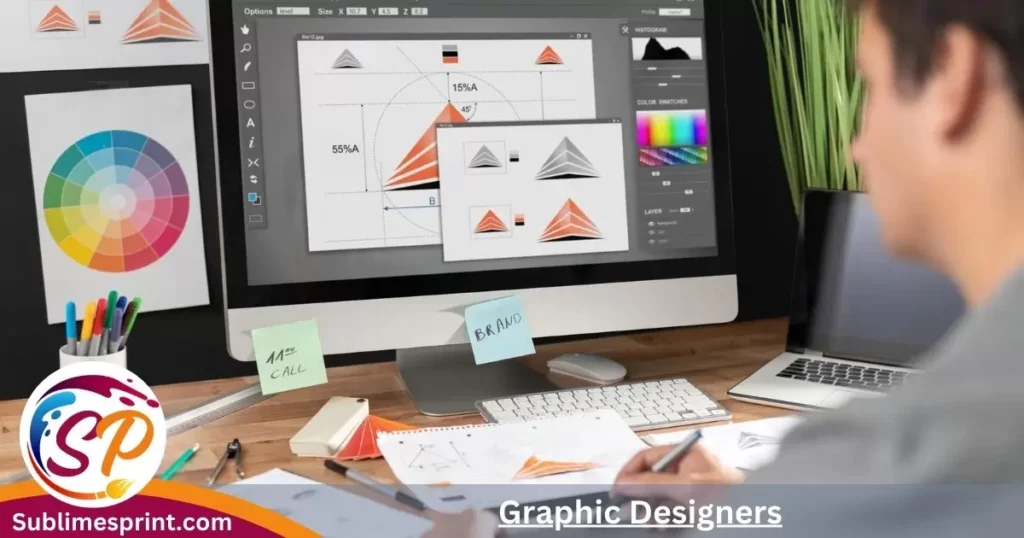
Choosing the Right Technique for Specific Projects
Alright, creative minds, now that we’ve met our superheroes, let’s talk about playing matchmaker with your designs. Here are some tips to help you decide whether to call on Sublimation Printing or Heat Transfer for your next creative mission.
Material Matters
- Sublimation Printing: If you’re working with fabrics, like T-shirts, or promotional items, sublimation is your go-to. It embeds the design into the material, creating a seamless and vibrant look.
- Heat Transfer: For versatility, think heat transfer. It sticks to fabrics like a charm, but it’s also your sidekick for customizing hard surfaces like mugs, phone cases, or even DIY crafts.
Project Scale
- Sublimation Printing: Ideal for larger-scale projects where vibrant colors and durability are key. Think about bulk orders for events or personalized gifts that need that extra wow factor.
- Heat Transfer: Perfect for smaller projects and one-off creations. It’s budget-friendly and allows you to experiment without committing to a massive production.
Troubleshooting Common Issues
Even our superheroes face challenges. Here’s how to tackle common hiccups in your printing adventures.
Sublimation Printing Woes
- Color Fading: Ensure you’re using high-quality dyes and fabrics. Cheap materials can lead to disappointing results.
- Inconsistent Heat: Maintain a consistent heat press temperature for uniform results.
Heat Transfer Headaches
- Peeling Designs: Apply enough heat and pressure during the transfer. Sometimes, a few extra seconds can make all the difference.
- Cracking: If your designs crack, you might be stretching the material too much. Opt for fabrics that offer a bit more flexibility.
Incorporating Sublimation and Heat Transfer into Design Trends
Now that you’re armed with the know-how, let’s talk trends. How can you incorporate these techniques into your cutting-edge designs?
Mix and Match
- Create Hybrid Designs: Combine sublimation’s detailed prints with heat transfer’s bold, textured elements for a design that stands out.
Customize on Demand:
- Offer Personalization: Use heat transfer for quick, on-demand customization at events or markets. Let people choose their designs and get creative on the spot.
Experiment with Materials:
- Play with Surfaces: Heat transfer isn’t just for clothes. Experiment with customizing mugs, phone cases, or even wooden surfaces for unique creations.
Case Studies
Real-World Examples Showcasing Sublimation Printing Success Stories
Alright, creative adventurers, let’s take a stroll through some real-life tales where Sublimation Printing proved to be the hero of the day.
Custom Apparel Marvel
Imagine a sports team gearing up for a big tournament. Sublimation swoops in, transforming their jerseys into vibrant, eye-catching masterpieces. The colors stay put, even after intense matches and numerous washes, making the team stand out on and off the field.
Promotional Power
A local business wants to leave a lasting impression at a trade show. Sublimation comes to the rescue, turning ordinary promotional items into memorable giveaways. The vivid prints create a buzz, ensuring the business stays top of mind long after the event.
Heat Transfer Projects That Demonstrate Creativity and Versatility
Now, let’s switch gears and explore how Heat Transfer became the star of some creative endeavors.
Fashion Forward with Custom Tees
Picture a fashionista wanting a wardrobe that’s as unique as her personality. Heat transfer steps in, allowing her to create personalized T-shirts with quirky designs. It’s a budget-friendly way to stay on-trend without breaking the bank.
DIY Magic Unleashed
A group of friends gathers for a crafting day. Heat transfer becomes their magical wand, turning plain tote bags into personalized masterpieces. From inside jokes to favorite quotes, each bag tells a story, creating memories that last.
The Power of Combining Sublimation and Heat Transfer
But wait, there’s more! Imagine a world where both techniques join forces.
Hybrid Home Decor
A home decor enthusiast dreams of unique wall art. Sublimation brings detailed prints to canvas, while heat transfer adds textured elements like metallic accents. The result? A stunning hybrid masterpiece that becomes the focal point of the room.
On-the-Spot Event Customization
At a community fair, a booth offers custom designs on T-shirts. Sublimation handles the intricate details of the main design, while heat transfer allows attendees to add their personal touch with names or dates. It’s a dynamic duo that ensures everyone leaves with a one-of-a-kind keepsake.
DIY Corner
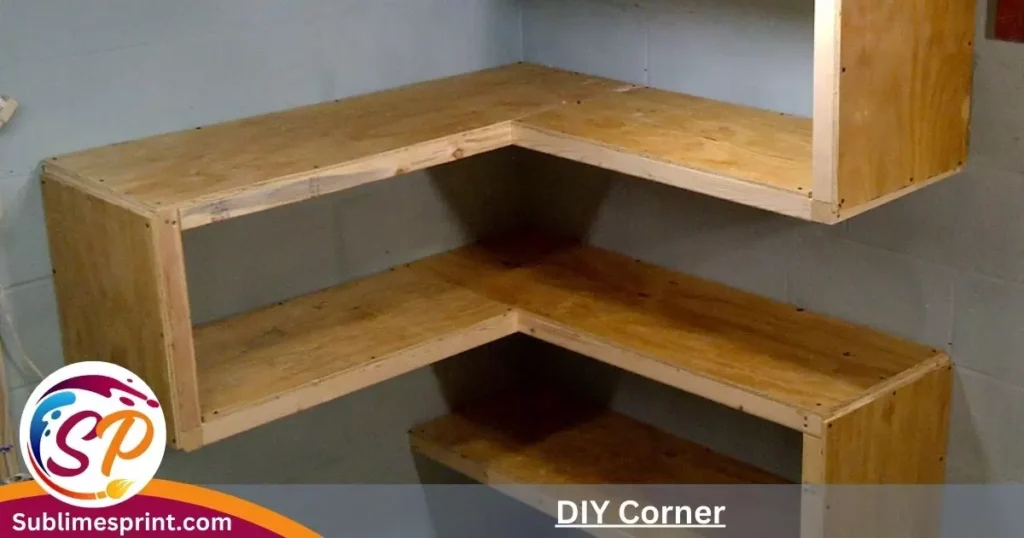
Step-by-Step Guide for a Simple Sublimation Project
Hello, creative do-it-yourselfers! Now that we’ve explored the superpowers of Sublimation Printing, let’s embark on a hands-on journey. We’re going to create a personalized item using sublimation. Ready? Let’s dive in!
Gather Your Materials
- Sublimation printer and ink
- Blank sublimation-ready item (like a mug or a T-shirt)
- Design software
- Heat-resistant tape
Choose Your Design
Select a design that speaks to you. It could be a favorite quote, a cute illustration, or even a photo. Make sure it fits the dimensions of your chosen item.
Prepare the Design
Using your design software, mirror the image. This step is crucial for sublimation, as the image will transfer backward onto the item.
Print the Design
Load sublimation paper into your printer and print your mirrored design. The vibrant colors will come to life during the transfer process.
Secure the Design
Wrap your printed design around the item and use heat-resistant tape to secure it in place. Ensure it’s tight and well-positioned.
Heat Press Time
Set your heat press to the recommended temperature for sublimation. Place your item with the secured design into the press and let the magic happen.
Revel in Your Creation
After the designated time, carefully remove your item from the press. Allow it to cool, and there you have it—a personalized masterpiece through the wonders of sublimation!
Hands-On Tutorial for a Basic Heat Transfer Craft
Hey there, craft enthusiasts! Now, let’s roll up our sleeves and explore the wonders of Heat Transfer. We’ll create a simple yet stylish item using this versatile technique. Excited? Let’s get started!
Gather Your Materials
- Heat transfer paper
- Heat transfer vinyl in your chosen color
- Blank item (T-shirt, tote bag, etc.)
- Design software
- Cutting machine (if using vinyl sheets)
Choose and Create Your Design
Pick a design that suits your style. Whether it’s a funky graphic, a catchy phrase, or a minimalist pattern, let your creativity flow. Size it according to your chosen item.
Prepare the Design for Cutting
If using heat transfer vinyl sheets, load the vinyl into your cutting machine and let it work its magic. If you’re using pre-cut vinyl, you’re ready to move on.
Weed the Design
Carefully remove the excess vinyl from around your design using a weeding tool. This reveals the intricate details of your chosen design.
Position and Press
Place your weeded design onto the blank item. Ensure it’s centered and where you want it. Use a heat press or an iron to apply heat and pressure, transferring the vinyl onto the item.
Peel and Admire
After the pressing time is up, peel away the transfer sheet, revealing your customized creation. Admire your handiwork as your design now graces your chosen item!
There you have it, DIY champions! Whether you’re into sublimation or heat transfer, these hands-on guides should ignite your creative spark. Ready to bring your designs to life? Let’s keep crafting!
People also ask
Is Sublimation Printing Better than Heat Transfer?
Both sublimation printing and heat transfer have their strengths. Sublimation printing is excellent for vibrant and long-lasting designs on fabrics, while heat transfer offers versatility on various surfaces. The “better” choice depends on your project needs—sublimation for detailed, colorful fabrics, and heat transfer for customizable, budget-friendly creations.
What Lasts Longer: Sublimation or Heat Transfer?
When it comes to longevity, sublimation printing often outlasts heat transfer. Sublimation embeds the design into the fabric, making it more durable against washing and wear. Heat transfer, while lasting a good amount of time, may experience peeling or cracking over extended use.
What Is the Difference Between Sublimation and DTF Heat Transfer?
The main difference between sublimation and DTF (Direct-to-Film) heat transfer lies in the printing process. Sublimation uses heat to turn dye into a gas, bonding it with fabric. DTF heat transfer involves printing designs onto a film, which is then transferred to the fabric using heat and pressure. Sublimation offers more vibrant and seamless results, while DTF allows for intricate designs on various materials.
Can You Do Sublimation with Cricut?
Yes, you can use a Cricut machine for sublimation. Create your design, print it on sublimation paper, and then use the Cricut to cut the design into the desired shape. Apply heat using a heat press to transfer the sublimation ink onto your fabric or material. Just ensure your Cricut is equipped with the necessary tools for cutting sublimation paper, and you’re ready to infuse your creations with vibrant colors!
Conclusion
Hello, design adventurers! We’ve journeyed through the colorful realms of Sublimation Printing and the versatile wonders of Heat Transfer. Now, let’s wrap it up in simple terms.
Sublimation is like magic coloring; it hugs fabrics with vibrant designs. Heat transfer is the sticker superhero, adding flair to clothes and crafts.
They have strengths—sublimation for lasting colors, heat transfer for quick customization. Consider your budget, project size, and material—sublimation for big, detailed projects, heat transfer for affordable, smaller ventures.
In the end, both techniques bring art to life. Remember, sublimation loves fabrics, while heat transfer is your crafty sidekick on various surfaces. So, young creators, armed with this knowledge, go forth and create! Your designs await their superhero moment. Keep dreaming, keep designing!

I’m James Wilson, the driving force behind “Sublimes Print.” I’ve been deep in the world of sublimation printing, bringing my expertise and hands-on experience to the table. With a robust background in the art of sublimation printing, I’m all about sharing insights, exploring industry innovations, and fostering a collective appreciation for the craft.
So, join me on this printing journey, where we dive into the intricacies of sublimation and celebrate the beauty it brings to the world of printing!
